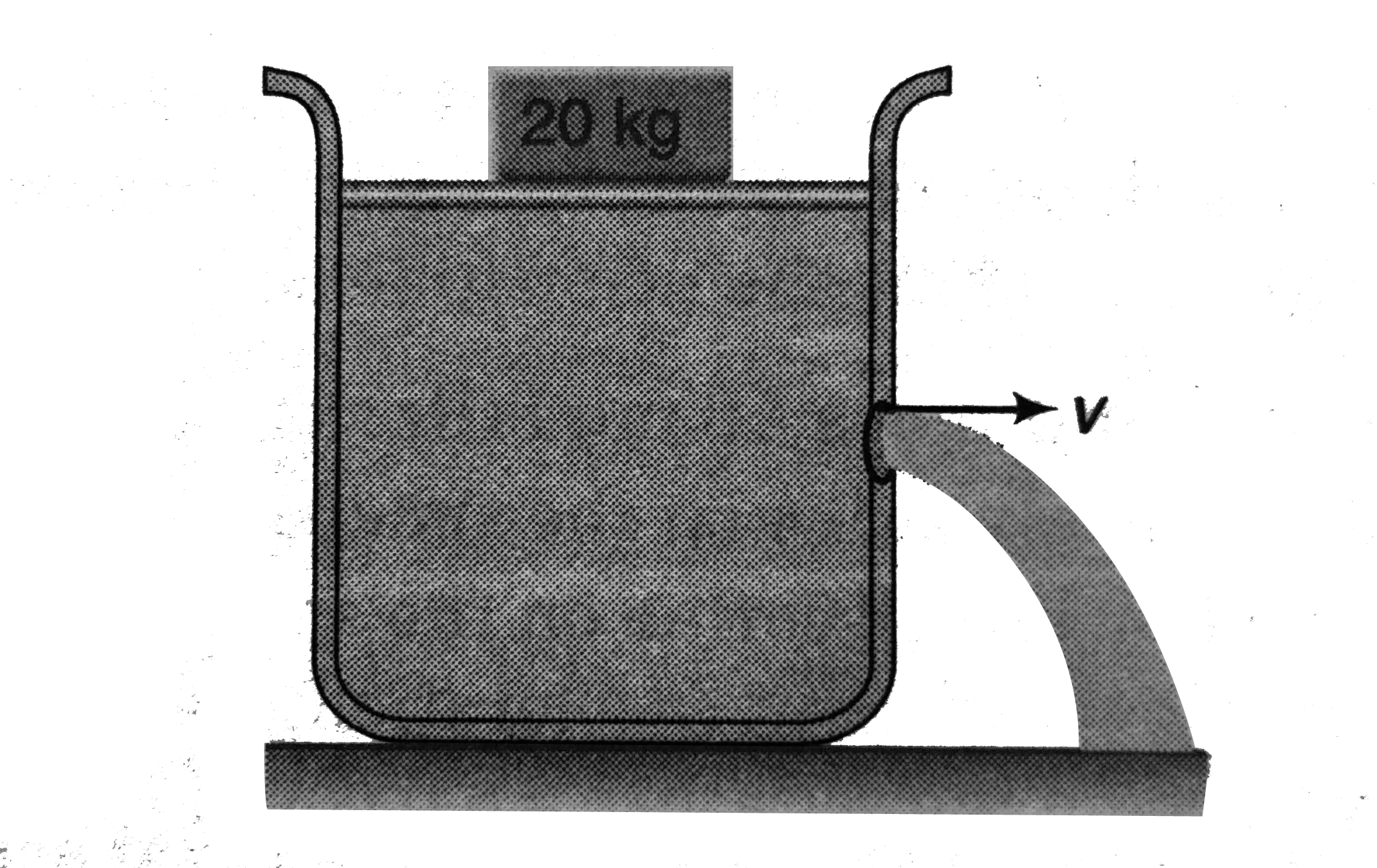A rigid cylindrical container having a cross sectional area of is filled with water up to a height of . There is a piston of negligible mass over the water. Piston can slide inside the container without friction. When a weight of is placed over the piston, it moves down by mm compressing the water.
Density of water Atmospheric pressure and . With this information calculate the speed of sound in water.

The correct Answer is:1414 m/s
Step by step video, text & image solution for A rigid cylindrical container having a cross sectional area of 0.2 m^(2) is filled with water up to a height of 5.0 m. There is a piston of negligible mass over the water. Piston can slide inside the container without friction. When a weight of 2000 kg is placed over the piston, it moves down by 0.25 mm compressing the water. rho= Density of water = 10^(3) kg//m^(2), P_(atm)= Atmospheric pressure =10^(5) N//m^(2) and g=10 m//s^(2). With this information calculate the speed of sound in water. by Physics experts to help you in doubts & scoring excellent marks in Class 11 exams.
Related Playlists
Similar Questions
A cylinderical jar of cross-sectional area of 50cm2 is filled with water to a height of 20cm. It carries a tight fitting piston of negligible mass. Calculate the pressure at the bottom of the jar when a mass of 1kg is placed on the piston . Ignore atmospheric pressure.
View SolutionA cylindrical tube of cross sectional area 20cm2 is filled with water to a height of 10cm. The tube carries a tight fitting piston of negligible mass. What will be the pressure exerted at the bottom of the tube when a mass of 2 kg placed on the piston? Atmospheric pressure can be ignored.
View Solution_S01_053_Q01.png)
A large cylinderical tank of cross-sectional area 1m2 is filled with water . It has a small hole at a height of 1 m from the bottom. A movable piston of mass 5 kg is fitted on the top of the tank such that it can slide in the tank freely. A load of 45 kg is applied on the top of water by piston, as shown in figure. The value of v when piston is 7 m above the bottom is (g=10m/s2)
(a). √120m/s
(b). 10m/s
(c). 1m/s
(d). 11m/sView SolutionA piston of cross-sectional area 100cm2 is used in a hydraulic pressure to exert a force of 107 dyne on the water. The cross-sectional area of the other piston which support a truck of mass 2000 kg is
View SolutionWhat is force on the base of a tank of base area 1.5m2 when it is filled with water upto a height of 1m
(ρwater=103kg/m3,P0=105Pa and g=10m/s2)View SolutionTwo pistons of hydraulic press have diameter of 30.0cm and 2.5cm, find the force exerted on the longer piston when 50.0kg wt. is placed on smaller piston.
View SolutionAn observer observer a fish moving upwards in a cylindrical container of cross section area 1m2 filled with water up to a height of 5m. A hole is present at the botton of the container having cross section areea 1/1000m2. Find out the speed of the image of fish observed by observer when the botton hole is just opened. (Given: The fish is moving with the speed of 6m/s towards the observer, μ of water =4/3)
View SolutionA long cylindrical tank of cross-sectional area 0.5m2 is filled with water. It has a small hole at a height 50cm from the bottom. A movable piston of cross-sectional area almost equal to 0.5m2 is fitted on the top of the tank such that it can slide in the tank freely. A load of 20kg is applied on the top of the water by piston, as shown in the figure. Calculate the speed of the water jet with which it hits the surface when piston is 1m above the bottom. (Ignore the mass of the piston)
 View Solution
View SolutionA piston of cross-sectional area 100cm2 is used in a hydraulic pressure to exert a force of 107 dyne on the water. The cross-sectional area of the other piston which support a truck of mass 2000 kg is
View SolutionWater is filled in a cylindrical container to a height of 3m. The ratio of the cross-sectional area of the orifice and the beaker is 0.1. The square of the speed of the liquid coming out from the orifice is (g=10m/s2).
 View Solution
View Solution


